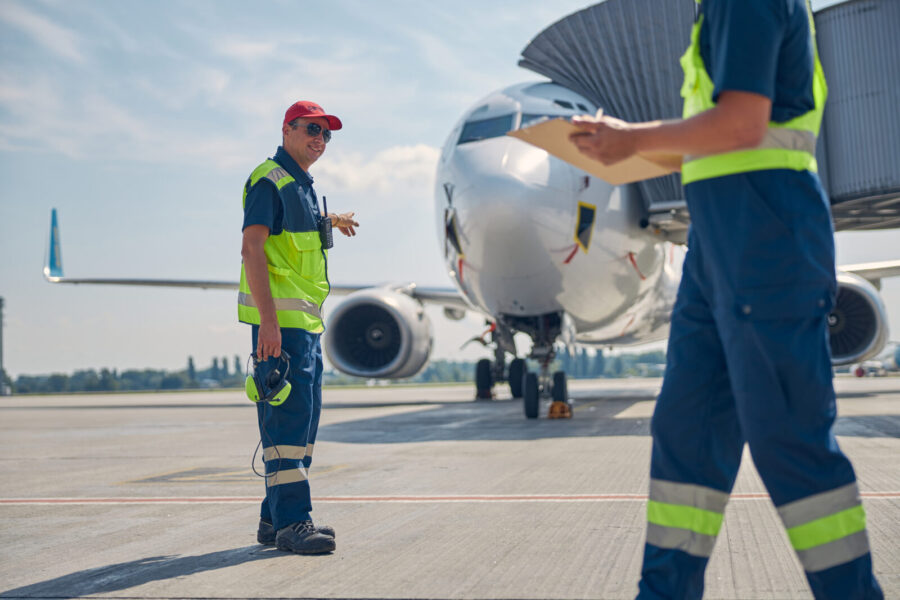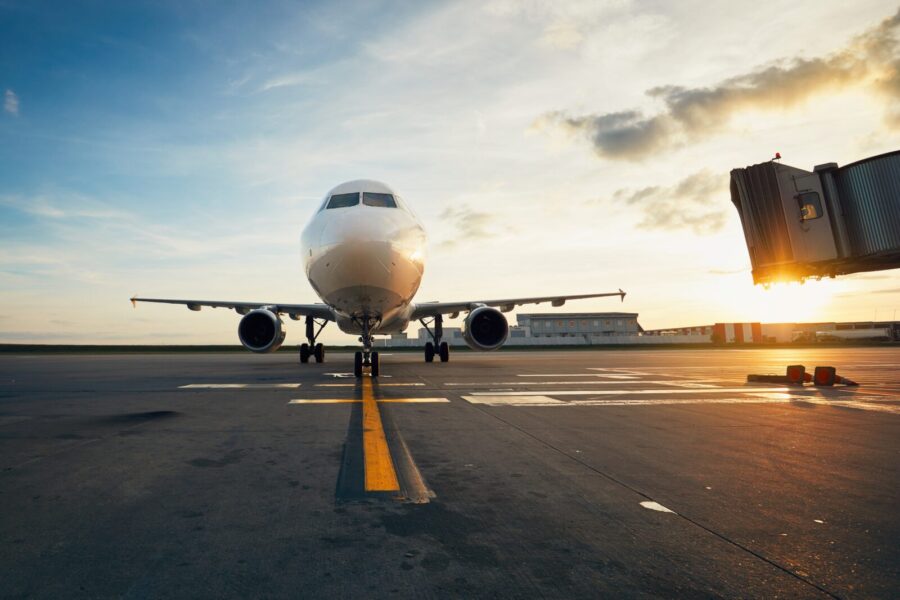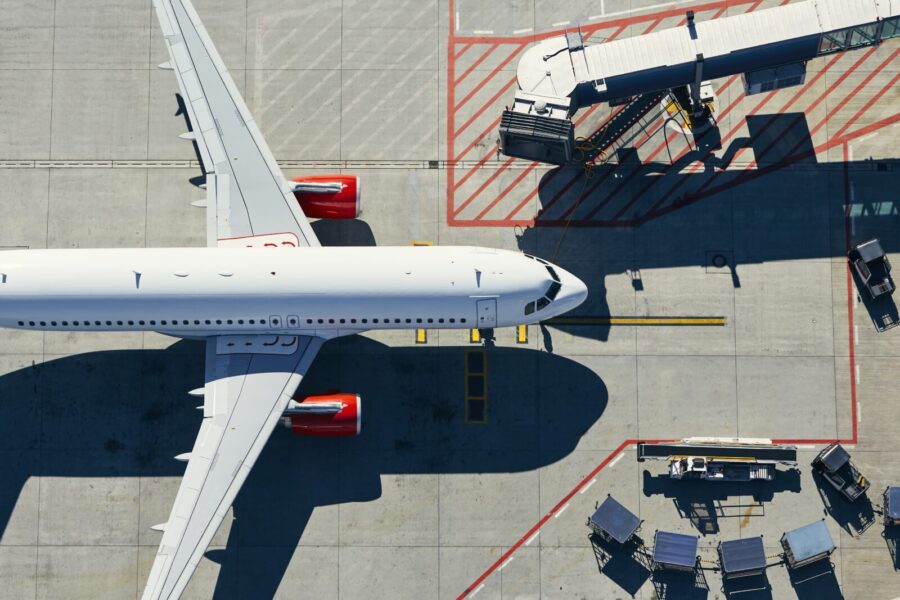What Does AOG Mean in Aviation?
23 January 2023 | Updated on February 05, 2024
Aircraft on ground (AOG) is one of the most dreaded terms among airline operators and aviation charter companies. Although the general public knows little about AOGs, they often experience these situations through flight delays or cancellations. An AOG situation is the direct fallout from aircraft groundings due to maintenance issues, weather-related problems, or conflicting flight schedules.
Airplane groundings or AOGs are not fun, and they tend to disrupt air traffic, cause flight backlogs, and, occasionally, airport shutdowns. According to Boeing, an AOG situation can cost airlines up to $150,000 per hour in lost revenue.
What does an AOG situation mean in aviation? What are its causes and costs, and how can they be avoided?
Read on to learn all about it!

What does Aircraft on Ground (AOG) mean?
Aircraft on ground (AOG) is an aviation term signifying a grounded airplane that is prevented from taking flight due to technical or other related issues. It can be distressing for everyone involved, including aircraft operators, passengers, and freight companies. Disruptions caused by mechanical/technical aircraft groundings typically last a few hours and may result in minor flight delays. AOG disruptions caused by severe weather conditions can persist for several days and may cost airlines several million dollars.
An AOG situation can occur unexpectedly, and aircraft grounded for mechanical reasons require emergency AOG services. This means fixing and returning the aircraft to flight rotation becomes a top priority to prevent additional delays and cancellations. Technicians may be diverted from other aircraft to diagnose and fix the issue, and there is a mad scramble to obtain the correct parts needed to get the aircraft back in the air.
Cost of AOG situations
An AOG encounter typically costs airline operators at least three to five times the value of the parts that need replacing. Airlines operating scheduled flights bear the brunt of AOG costs, with U.S. airlines spending an estimated $31 billion on AOG-related costs. Typical AOG costs include airport usage fees, hangar costs, repair equipment, expedited spare parts, technician overtime allowance, ticket refunds, and passenger compensation.
Here is a complete breakdown of the total costs of a 3-day AOG for an Airbus A320.
| Cost Per Day | Total | |
| Aircraft Lease (3 days) | $6,451 | $19,354 |
| Maintenance check (3 days) | $1,511.7 | $4,535.1 |
| Replacement parts | $8,785 | |
| Airport charges | $2,710 | $8,130 |
| Total | $40,804.1 |
An AOG event does not stop all current debt or lease payments on an aircraft. So, if the average monthly lease for an Airbus A320 at $200,000, we can determine the lease cost of the aircraft, even during the grounding, is $6451 per day. The daily wages of three mechanics working an eight-hour shift, including two-hour overtime at $50.39 per hour to diagnose, remove, and replace the Airbus damaged parts is $1,511.70. According to a study, the average cost for replacement parts for an AOG event is $8,785.36. Other airport charges are estimated at $2,710 per day, depending on the size and location of the airport.
Determining the cost of any AOG situation depends on a few factors. These include:
- Location of the grounded aircraft – remote airports have fewer specialized equipment and tools to fix grounded aircraft than major hubs. Airlines may need to move the resources and pay higher rates to ship the spare parts required to repair the aircraft to remote airports than major airports.
- Availability of spare parts – lack of spare parts can increase the grounded aircraft downtime resulting in loss of income as airport charges and hangar space costs accumulate.
- Location of spare parts – it is less expensive to ship spare parts locally. However, when sourcing spare parts from other countries, international freight charges cost significantly more.
- Skilled personnel – the aircraft operator may need to divert mechanics working on other planes or fly mechanics to the aircraft if it is grounded in a remote airport.
Airlines and charter companies often mitigate the high costs of AOG events by purchasing insurance policies created to cover AOG-related costs. Also, large airlines set up AOG response desks designed for handling aircraft grounding situations.

Causes of AOG Events
Modern commercial airliners are state-of-art aircraft with thousands of independent components designed to function efficiently for long periods. But these components fail unexpectedly, resulting in the aircraft’s grounding. However, equipment malfunction isn’t the only reason for aircraft groundings. An AOG event can occur in a mechanically perfect aircraft for several reasons.
Let’s take a look at all possible causes of an AOG event:
- Post-inspection failure – commercial aircraft in the United States must complete periodic inspections as required by the Federal Aviation Authority (FAA). These include 100-hour, annual, and progressive inspections to determine whether the aircraft is safe to fly. Any aircraft that fails the required inspections is grounded and declared AOG until the problem is resolved and the plane returns to flight status.
- Malfunction – the thousands of electronic, mechanical, and hydraulic components making up commercial airliner systems can malfunction during or before flights. When this occurs, the aircraft is immediately grounded and declared AOG until the malfunctioning parts are repaired or replaced and the airplane is approved for flight.
- Potential malfunction – discovering possible malfunction of an aircraft component can be a reason for an aircraft’s grounding once the issue is determined severe enough to make the aircraft unsafe to fly. The aircraft enters AOG status and is fixed before being approved for flight rotation.
- Ground damage – is a major cause of AOG events. Damage to the aircraft undercarriage during aircraft towing or from other aircraft during parking can cause an aircraft grounding until the damaged part is replaced.
- Non-available parts – an airplane can be grounded indefinitely while waiting for a single non-available part required for an hour-long parts replacement job. Incidences of AOG events extending for weeks due to a lack of spare parts are relatively common.
How do airlines handle AOG events?
AOG events are guaranteed to occur in the most unexpected places, and airlines are always experimenting with the right strategy for managing aircraft groundings whenever they occur. Because AOG events often defy the best-laid plans, most methods designed to handle aircraft groundings effectively mitigate AOG impact. The best strategy gets the aircraft airborne within the shortest possible time.

Here are some common approaches to quickly get a grounded aircraft flying:
- Flyaway Kit – a flyaway kit comprises essential tools and original manufacturer spare parts determined to have the highest probability of malfunctioning. They are instantly available at remote airports with limited technical support. Flyaway kits can be owned by airlines or by a technical partner with significant experience providing AOG technical support.
- Partnerships – airlines often partner with other aviation industry players in the following ways;
- Technical support partners – airlines often partner with companies operating from airports where they have frequent flights to deliver critical technical support during AOG events.
- Other airlines – although airlines fiercely compete for market share, they develop partnerships to pool critical resources during an AOG crisis through International Airline Technical Pooling (IATP) and other technology platforms. These may involve sharing technical personnel, loaning, or borrowing agreements at minimal rates to mitigate AOG costs.
- Cannibalization – airlines often remove needed parts from an aircraft undergoing periodic maintenance to service an AOG and get it airborne. The parts are then replaced on the grounded aircraft for routine maintenance.
- Material Readiness & RSPL – material readiness and Recommended Spare Parts List (RSPL) document allows airlines to identify vital aircraft parts. This typically occurs when introducing new aircraft and allows airlines to plan for AOG events by outlining information on parts availability per aircraft. Critical information like Mean Time Between Unscheduled Removal (MTBUR), lead time for ordering, and the number of parts the airline needs to stock to prevent aircraft grounding.
- Airline experience – airlines can track the maintenance history of their aircraft models and identify the frequency of component malfunctions and removals. The data is valuable for planning future AOG events.
- Borrow or take loaned units – airlines can quickly resolve AOG events by borrowing or taking spare parts on loan to prevent costly AOG purchases. MROs operating from the AOG location, airlines, and handling agencies can be helpful. You can also cast a wider net for loaner parts around the region or the entire country.
- Getting a unit of exchange – is an excellent solution for obtaining the required parts during an AOG event. Airlines often use trading platforms or material partners to source units.
- Get OEM components – though an expensive option, contacting airplane manufacturers, parts distributors, and supplies can be the fastest method for obtaining critical spare parts to resolve an AOG event. It is important to remember that grounded aircraft lose revenue each hour, and airlines do whatever they feel is expedient to get their plane airborne as soon as possible.
Direct effects of AOG events on airlines, passengers, and businesses
AOG events can have devastating consequences on an airline’s bottom line. But what about its impact on passengers and companies that rely on air traffic to move vital resources? Here, we shall delve into the impact of airplane groundings.
- Loss of revenue – grounded airplanes need to make money. Airlines can’t sell tickets for the aircraft’s scheduled routes until the plane is repaired and approved for flight operations. On the other hand, the airline must pay the aircraft’s operational costs despite its AOG status. Airlines may need to refund ticket costs or make alternate accommodation arrangements for passengers stranded by an AOG event.
- Passenger delays – AOG events can be stressful for passengers who want to get to their destinations on time. The anxiety and uncertainty caused by flight delays and cancellations often take a heavy toll on the physical and mental health of the people involved.
- Delayed air cargo – businesses relying on air cargo for goods delivery will endure longer fulfillment times for orders placed by customers. A single airplane grounding can upend entire supply chains. This can be disastrous for restaurants, florists, and medical laboratories, businesses that depend on quick shipping times for fresh products and samples.

Conclusion
AOG events are costly, and an airline’s chances of preventing one are doubtful. However, airlines can implement tools and resources to minimize its effects and return stricken aircraft to service within the shortest time. Airlines and aircraft operators can partner with mobile support teams and freight companies to improve their AOG response and reduce its financial impact. Minimizing the adverse effects of aircraft groundings on passengers should be a priority for airlines. Vulnerable businesses must implement contingencies mitigating the fallouts from delayed shipments due to AOG events.






























